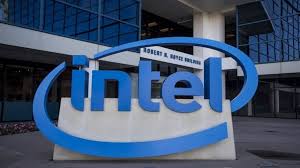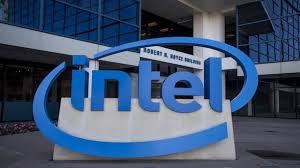
Intel revealed increasing operating losses for its foundry division, which is a setback for the chipmaker as it attempts to reclaim the technological advantage it lost to Taiwan Semiconductor Manufacturing in recent years.
Compared to the $5.2 billion in operating losses the previous year, Intel said that the manufacturing unit's operating losses for 2023 were $7 billion, a more substantial loss. In 2023, the unit's sales was $18.9 billion, a 31% decrease from $27.49 billion the previous year.
Following the filing of the filings with the U.S. Securities and Exchange Commission (SEC), Intel shares fell 4.3%.
In an investor presentation, Chief Executive Pat Gelsinger stated that the company's chipmaking division would have its largest operating losses in 2024 and that it anticipates operating break-even by roughly 2027.
According to Gelsinger, poor choices have crippled the foundry industry. One such decision was made a year ago when it was decided not to use extreme ultraviolet (EUV) machines from the Dutch company ASML. Even though those devices can cost over $150 million, they are still more affordable than the instruments used in the past to make chips.
According to Gelsinger, Intel has contracted out roughly 30% of its overall wafer production to outside manufacturers like TSMC, in part because of the company's mistakes. It seeks to reduce that figure to about 20%.
As previous computers are phased out, Intel has now shifted to employing EUV tools, which will cover an increasing amount of production demands.
"In the post EUV era, we see that we're very competitive now on price, performance (and) back to leadership," Gelsinger stated. "And in the pre-EUV era we carried a lot of costs and (were) uncompetitive."
In four US states, Intel intends to invest $100 billion in the construction or expansion of semiconductor facilities. Convincing outside businesses to use its manufacturing services is a key component of its business turnaround plan.
Intel informed investors that part of that approach included starting to report manufacturing operations' performance as a separate entity. To overtake its main competitors in the semiconductor industry, TSMC and Samsung Electronics Co Ltd., the corporation has been making significant investments.
(Source:www.moneycontrol.com)
Compared to the $5.2 billion in operating losses the previous year, Intel said that the manufacturing unit's operating losses for 2023 were $7 billion, a more substantial loss. In 2023, the unit's sales was $18.9 billion, a 31% decrease from $27.49 billion the previous year.
Following the filing of the filings with the U.S. Securities and Exchange Commission (SEC), Intel shares fell 4.3%.
In an investor presentation, Chief Executive Pat Gelsinger stated that the company's chipmaking division would have its largest operating losses in 2024 and that it anticipates operating break-even by roughly 2027.
According to Gelsinger, poor choices have crippled the foundry industry. One such decision was made a year ago when it was decided not to use extreme ultraviolet (EUV) machines from the Dutch company ASML. Even though those devices can cost over $150 million, they are still more affordable than the instruments used in the past to make chips.
According to Gelsinger, Intel has contracted out roughly 30% of its overall wafer production to outside manufacturers like TSMC, in part because of the company's mistakes. It seeks to reduce that figure to about 20%.
As previous computers are phased out, Intel has now shifted to employing EUV tools, which will cover an increasing amount of production demands.
"In the post EUV era, we see that we're very competitive now on price, performance (and) back to leadership," Gelsinger stated. "And in the pre-EUV era we carried a lot of costs and (were) uncompetitive."
In four US states, Intel intends to invest $100 billion in the construction or expansion of semiconductor facilities. Convincing outside businesses to use its manufacturing services is a key component of its business turnaround plan.
Intel informed investors that part of that approach included starting to report manufacturing operations' performance as a separate entity. To overtake its main competitors in the semiconductor industry, TSMC and Samsung Electronics Co Ltd., the corporation has been making significant investments.
(Source:www.moneycontrol.com)














